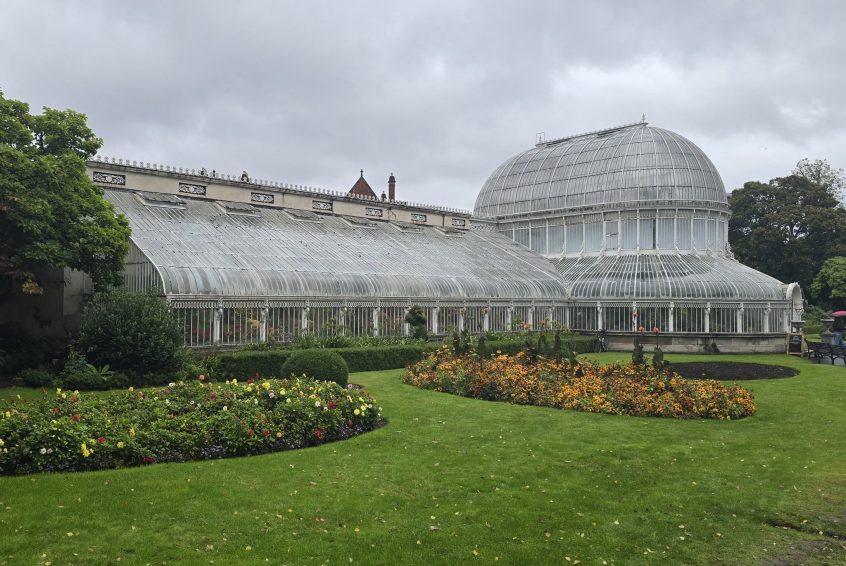The day started sunny, but I knew to bring along my umbrella. Good thing I did, more about that later.
My first stop was the Titanic Museum. Everyone I’ve spoken with who has visited Belfast told me it is a must-see. When I arrived I took a walk over to the only remaining White Star ship (the company that operated the Titanic). Along the way there was a wall of murals, which I found more captivating than the ship.
Then into the museum. Though it was still early (about 10:30 am) the lobby was crowded. I bought a ticket for the first available time—11:30. The gift shop, a cup of coffee, and people watching occupied the wait. I rode up a long escalator to the start of the “experience.”
The full arc of the museum is a history of Belfast leading up to the design and building of the Titanic. That was followed by lots of information and a Disneyesque ride through the building of the ship. Then there was an exhibit about fitting the ship with the finest interior spaces, including replicas of the first-class cabins. Launch day craziness around the world for the largest, most luxurious ship ever built. Then comes the part we are familiar with, hitting the iceberg and the sinking of the ship. Finally, the search for the Titanic remains at the bottom of the ocean.
The museum is impressive, with loads of interactive exhibits. To be honest, there was more information than I could possibly absorb. Anyone who is into engineering would need several days to take it all in. But with an aching back, and even with frequent rest breaks, there was simply too much.
Though I just hit the highlights, I did learn a lot. What I found most interesting and relevant to my own travels were the safety measures that followed the disaster. These included:
1. Lifeboats for All – The Titanic carried lifeboats for only half the people onboard, because regulations at the time were based on ship tonnage, not passenger numbers. Now, rules require enough lifeboats for every passenger and crew member on board.
2. Lifeboat Drills and Access – There were no drills and passengers had not a clue what to do. Now, crews are required to conduct regular lifeboat drills and inspections.
3. 24-Hour Radio Communications — On the Titanic and the ships the SOS signal was sent to didn’t have wireless operators on duty 24/7, so some distress calls went unheard. After the sinking of the Titanic, all ships carrying passengers are required to have continuous radio (wireless) watch and trained operators.
Even more surprising was that on this expensive, luxury liner the lookouts didn’t have binoculars. As a result, they didn’t see the iceberg until it was too late to stop the ship or course correct.
I’ll be going on a cruise in late October. After seeing this exhibit, I’ll happily go along with the safety drills.
When I left the museum to catch a bus, it was raining. First a light drizzle then a steady downpour. My plan had been to go to the botanical garden. So much for that idea.
Instead, I went downtown and ate a leisurely lunch. By the time I finished the sun was shining brightly and the sky was vivid blue. I would have found a bench and sat outside to people watch, but everything was soaked. Instead, I bought some food for a light dinner and went back to my hotel. After more than a week of constant movement, it felt great to just relax. I watched TV, read a book, and gave my aching back a much-needed break.

